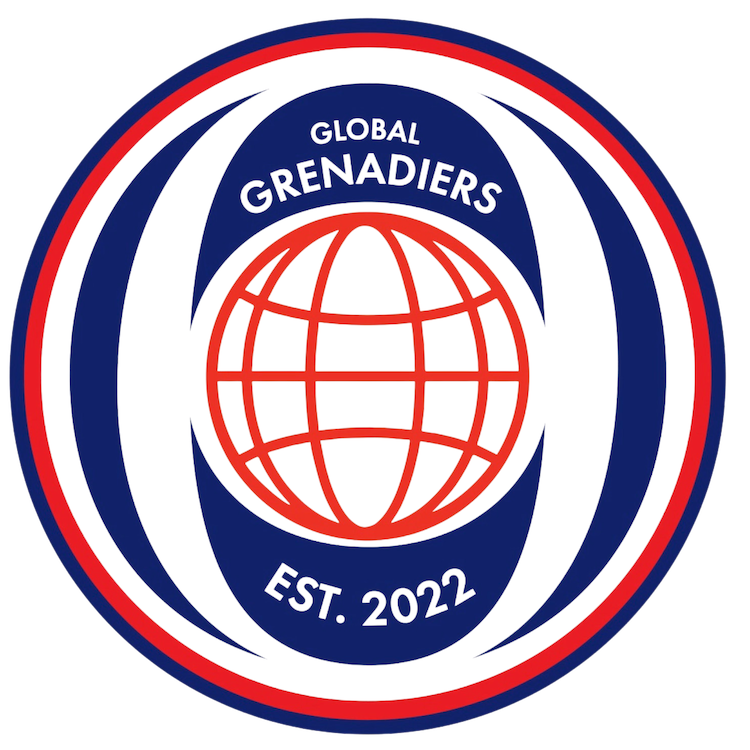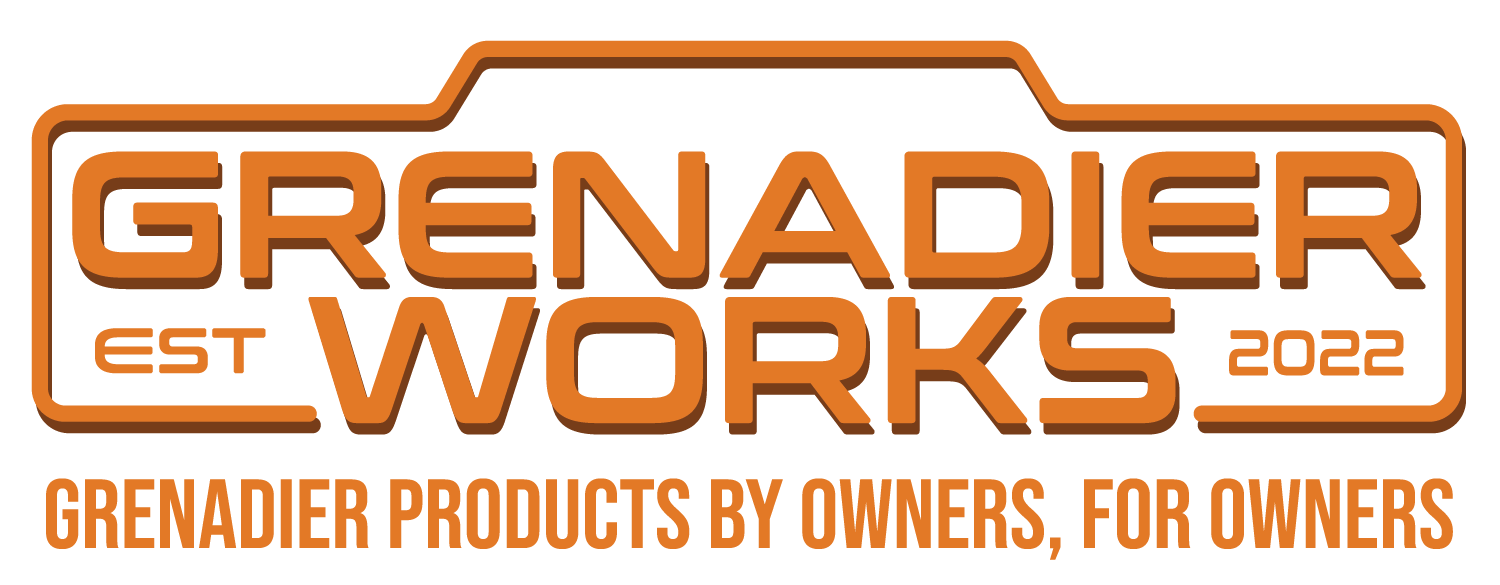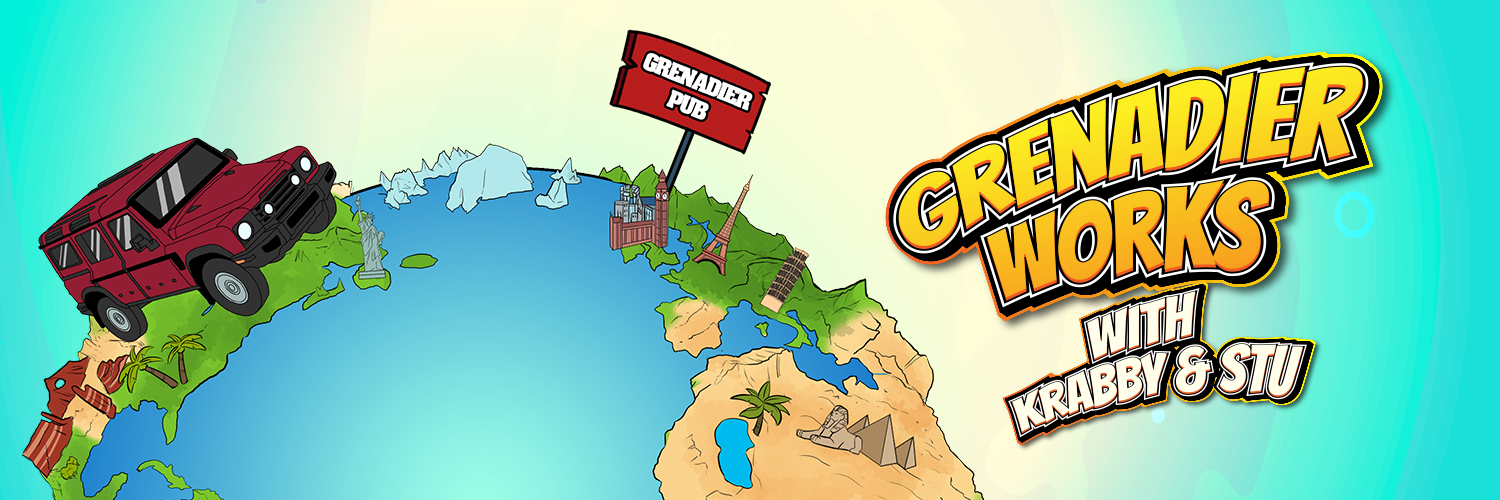To be fair Mike, it might be better then the Ineos factory set up 
The Grenadier Forum
Register a free account today to become a member! Once signed in, you'll be able to contribute to the community by adding your own topics, posts, and connect with other members through your own private inbox! INEOS Agents, Dealers or Commercial vendors please use the contact us link at the bottom of the page.
-
Guest submit your best shot for a chance to win the December Photo Contest. Photo Contest Click Here
You are using an out of date browser. It may not display this or other websites correctly.
You should upgrade or use an alternative browser.
You should upgrade or use an alternative browser.
Yes that is an axle shaft in the video but similar arrangements are used for driveshafts. Take a look at this factory front driveshaft for a Jeep Liberty. Something like this with a soft "CV Saver" installed inside the accordion boot should work. The larger aperture opening will give the CV Safer and boot room to flex.That's for axle shafts not Drive shafts. Axle shafts rotate at far fewer rpm's than a drive shaft depending on gear ratio in the diff. In the Grenadier the driveshaft spins 4x as fast as the axle shafts. Those are also being used for racing applications that get rebuilt for each race.
An accordion style would have to be more like hard plastic such as the one on the Grenadier for the slip joint. But these won't work at angle, the plastic will fail quickly.
I think we can agree that part of the problem is the small aperture paired with the small boot diameter is causing the issue. It really generates a hot spot because it requires a tremendous elongation percentage for the small amount of boot material. We need to spread that elongation over a larger area. We also need to keep the grease in the joint. I believe this arrangement will accomplish both goals.
Is this a perfect solution... no. The perfect solution would be to fix the pinion angle but that is much more involved. Maybe someday a company will offer cut and turn axles on a core basis. They send you a reworked axle and you send them your factory axles after it has been swapped out.
WFLNHB Vordere Antriebswelle Prop Assy 52111596AA Ersatz für 2002–2007 Liberty 3.7L 52111596AB : Amazon.de: Automotive
WFLNHB Vordere Antriebswelle Prop Assy 52111596AA Ersatz für 2002–2007 Liberty 3.7L 52111596AB : Amazon.de: Automotive
www.amazon.com
Something along those lines. The inner boot will need to be something like the CV Safer so that the grease will stay in the CV joint.Just trying to read the tea leaves here so a CV for a Porsche 93(x) with a CV-Saver or Double (inner/outer) accordion boot arrangement with a adapter plate to go from 6 bolt CV to 8 bolt flange on the Grenadier?
CV Savers - Kartek Off-Road
CV Savers for offroad racing in the King of the Hammers, New Zealand Taupo 1000, Dakar Rally, Tatts Finke Desert Race, Score International Baja 500 or Baja 1000, NORRA 500, NORRA Mexican 1000, Mint 400, Vegas to Reno, Silk Way Rally, Crandon International, East African Safari Rally, Rallye Aicha...
Yes that is an axle shaft in the video but similar arrangements are used for driveshafts. Take a look at this factory front driveshaft for a Jeep Liberty. Something like this with a soft "CV Saver" installed inside the accordion boot should work. The larger aperture opening will give the CV Safer and boot room to flex.
I think we can agree that part of the problem is the small aperture paired with the small boot diameter is causing the issue. It really generates a hot spot because it requires a tremendous elongation percentage for the small amount of boot material. We need to spread that elongation over a larger area. We also need to keep the grease in the joint. I believe this arrangement will accomplish both goals.
Is this a perfect solution... no. The perfect solution would be to fix the pinion angle but that is much more involved. Maybe someday a company will offer cut and turn axles on a core basis. They send you a reworked axle and you send them your factory axles after it has been swapped out.
View attachment 7910858
WFLNHB Vordere Antriebswelle Prop Assy 52111596AA Ersatz für 2002–2007 Liberty 3.7L 52111596AB : Amazon.de: Automotive
WFLNHB Vordere Antriebswelle Prop Assy 52111596AA Ersatz für 2002–2007 Liberty 3.7L 52111596AB : Amazon.de: Automotivewww.amazon.com
View: https://www.youtube.com/watch?v=Wi1nx53M4dY
That large floppy boot can't be on the T-Case side. Even with a CV saver all the grease will migrate into the big floppy boot. It will then harden on one side of the boot when it cools. It will then cause a major imbalance and destroy the boot. That issue aside the CV will already be dry at that point and will fail.
You might get away with a much much smaller version of that big floppy boot but not likely. But you are right, the aperture of the stock boot is just too small. A simple replica of the stock part with a larger aperture would solve the problem. But that's limited by the bolt pattern of the CV to a large degree. It could be worked around for sure, but it hasn't been to date even with all the Jeeps out there.
- Local time
- 12:35 PM
- Joined
- Sep 25, 2021
- Messages
- 507
In the meantime, can a failed front driveshaft be removed ‘in the field’, so that rear drive only can be used to take the trail to the nearest flatbed loading point?
We might disagree on some of the details but I think this is the best path forward at the moment.That large floppy boot can't be on the T-Case side. Even with a CV saver all the grease will migrate into the big floppy boot. It will then harden on one side of the boot when it cools. It will then cause a major imbalance and destroy the boot. That issue aside the CV will already be dry at that point and will fail.
You might get away with a much much smaller version of that big floppy boot but not likely. But you are right, the aperture of the stock boot is just too small. A simple replica of the stock part with a larger aperture would solve the problem. But that's limited by the bolt pattern of the CV to a large degree. It could be worked around for sure, but it hasn't been to date even with all the Jeeps out there.
Yes. You just have to lock the center diff for it to work.In the meantime, can a failed front driveshaft be removed ‘in the field’, so that rear drive only can be used to take the trail to the nearest flatbed loading point?
Ours is being driven around with out the front drive shaft for weeks. Thankfully the tcase design is fantastic, most would not like that. Oil would pour out, or the Rock Track case will do it, but sounds and drives like a car wreck.
Seriously, in 4 H lock you cannot even tell the drive shaft is missing. Remember, the reason 4h Lock would bind on road is no differential speed from to back, but with the drive shaft out its no an issue. Frankly, I have had other shaft issues in the past, and this ability is very handy.
We used to weld the center diff on rovers with the LT230 to make trucks partime. Then I want to say Ashcroft came out with the puck. Didn't do it a lot, but we did do it. Especially when we started breaking cross pins in the LT230.Seriously, in 4 H lock you cannot even tell the drive shaft is missing. Remember, the reason 4h Lock would bind on road is no differential speed from to back, but with the drive shaft out its no an issue. Frankly, I have had other shaft issues in the past, and this ability is very handy.
Assuming it did not do other disabling damage to the vehicle when it failed..In the meantime, can a failed front driveshaft be removed ‘in the field’, so that rear drive only can be used to take the trail to the nearest flatbed loading point?
Generally speaking though, the shafts rarely actually fail, and far (drastically) fewer times where the failed shaft disables the vehicle in some other wayAssuming it did not do other disabling damage to the vehicle when it failed..
Got it. I also have a 2.5" lift and wondering if I should just make other mods before weird stuff starts happening to this beast.The boot tore on his rzeppa joint. Because he has a 2.5" lift on his Grenadier Ineos denied him warranty repair.
Proformance Australia developing extreme angle CV joints for VW and Porsche Cayenne. They may be able to develop a high angle cv joint and driveshaft for Grenadier. Won't be cheap.
View: https://youtu.be/W4EQqJM332M?feature=shared
Hmmmm. Their capability statement suggests they're in the right engineering space to assist. Getting them to see the scale of a global opportunity would be key to getting their interest. IA should talk to them about an OEM solution.Proformance Australia developing extreme angle CV joints for VW and Porsche Cayenne. They may be able to develop a high angle cv joint and driveshaft for Grenadier. Won't be cheap.
View: https://youtu.be/W4EQqJM332M?feature=shared
Any of you sand gropers in the Perth area feel like a drive to Mundaring? Take some beers
Mine failed spectacularly in a molten ball of fire on the highway, and left no damage. That being said, if you went long enough for it to really fling around under neath, that could be bad.
Of all the "issues" with the vehicle, this is the one that has me the most concerned. Most other things seem to be resolved with dealer attention.
Agreed. I said it a year ago, this is the most serious design flaw. Some cheap parts need replaced, but they are not hard to replace or expensive. And I am guessing something like coolant reservoir the faulty supplier is on the hook. Is what it is, Ineos is going to have to step up on the driveshaft issue.
Mine failed spectacularly in a molten ball of fire on the highway, and left no damage. That being said, if you went long enough for it to really fling around under neath, that could be bad.
I'd be concerned if it failed on the road that it would either flop around enough to damage the transmission or transfer case, or hit the ground, dig in and destroy the transfer case and/or the transmission, + + +
I don't see how it could go that bad unless you ran it so long that the bearings broke apart and fell out. Even then, due to the design there might not be enough play in the flex joint to allow the splined shaft to back all the way out.I'd be concerned if it failed on the road that it would either flop around enough to damage the transmission or transfer case, or hit the ground, dig in and destroy the transfer case and/or the transmission, + + +
Similar threads
- Replies
- 4
- Views
- 354
- Replies
- 6
- Views
- 916
- Replies
- 66
- Views
- 4K



